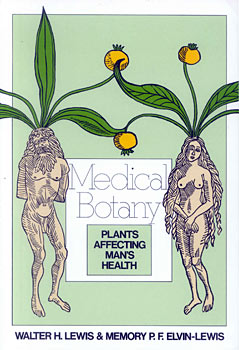
BACK COVER #
Medical Botany is a fascinating look at the facts and fictions surrounding plants and man--not only which plants affect our bodies, but how they affect them. Authoritative, rich in anecdote and lore, lavishly illustrated, this encyclopedic reference brings within your reach the curative, healing, poisonous, allergenic, and psychoactive properties of thousands of plants. Its ready reference format allows you to turn instantly to information about a specific plant's properties, its history, its use in orthodox medicine (where applicable) and its use in folk medicine. Discover a wealth of information on plants that have been used for such purposes as to treat peptic ulcers, to assist in the fight against cancer (in combination with chemotherapy), to help alleviate gout and diabetes, and to promote the healing of wounds. Each section begins with historical background of the plants discussed, with colorful stories ranging from Socrates' fatal hemlock to Timothy Leary's experiments. There are informative discussions of how your body works, with sections covering heart and circulation, metabolism, nervous system, urogenital system, gastrointestinal tract, allergies, ear, internal poisons, and more. This intriguing compendium/reference will enlighten, entertain, and give you a healthier knowledge of plants.BLURBS #
"Skillfully organized, neatly written, highly informative, and well illustrated, this is a stimulating and useful reference volume. It is not a mere catalog of medicinal plants, but a carefully prepared review of injuurious, healing and nourishing, and psychoactive plants . . . should be a lasting joy for reference and a source of continued satisfaction."-- American Scientist
"I would recommend this text highly . . . useful for the layman who wishes an introduction to the topic. The authors have provided a fresh look at a classic subject and should be commended for their efforts."
-- Economic Botany
". . . a vast compendium of information on medically important plants, both harmful and useful . . . commendable."
-- New England Journal of Medicine


